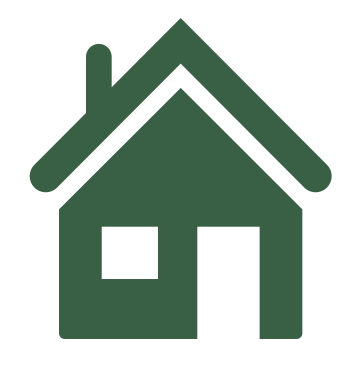Assessing Need
Internal Assessment
- Start with staff and stakeholder conversations. You might want to run a small focus group or talking circle to assess the need for youth housing and brainstorm next steps
- Think about internal expertise and capacity: what can your existing organization do in terms of queer youth housing? What external supports will you need?
- Survey and/or talk to youth that engage in your existing programming
OUTSaskatoon ran a survey with 2SLGBTQ+ youth that were a part of Rainbow Coffee (weekly youth programming). This survey showed that 40% of Rainbow Coffee attendees experienced housing precarity or housing insecurity (i.e. they were couch-surfing, staying with friends, or living at a relative's home) at some point during the previous year. This research was really valulabe when it came to making a case for Pride Home with funders and other stakeholders.
External assessment
- Scan local housing agencies to determine whether or not they provide services to 2SLGBTQ+ youth
- Meet with other housing agencies in your area about 2SLGBTQ+ youth housing
- Reach out to local colleges and universities to gauge interest in supporting your initiatives through research and/or evaluation
- Consider conducting a needs assessment or building a buisness plan related to your project
Collecting this information will help you to understand your relationship to other local programs and will build your knowledge of the current need for 2SLGBTQ+ housing in your community.
Building Partnerships
Local Partners
It takes a village! Supporting 2SLGBTQ+ youth requires meaningful partnerships in your surrounding community. Look for partners with:
- Strong connections to local housing organizations
- Understanding of local housing regulations
- Connections to fundraising opportunities
- Experience with grants and funding opportunities as they apply to housing initiatives
Provincial/Regional Partners
- If your organization already runs housing, you will need to secure funds for a 2SLGBTQ+ specific initiative
- It is strongly encouraged to partner with an existing 2SLGBTQ+ resource centre so that the community can provide input and continued support
- If your organization is already a 2SLGBTQ+ resource centres, connecting with a local housing organization will open doors to resources, funding, and expertise
- You will want to contact the housing branch of your provincial/territorial government to explore funding opportunities
- Connect with community foundations, your local United Way, and other provincial funders to explore opportunities for grants and support
Federal/National Partners and Resources
Below are examples of national funders and organizations that could be used as a support for your housing program:
Locating and Designing the Home
If possible, it is highly recommended that you consult with 2SLGBTQ+ youth when you are decide on the location and design of the home.
Location
Elements to consider:
- Access to transportation (e.g., bus routes)
- Nearby education for highschool upgrading, college, or university classes
- Proximity to related supports/services (i.e. if your organization provides a support group for 2SLGBTQ+ youth, make sure that it is accessible to the home)
- Safety: make sure that the youth will feel comfortoable in the surrounding neighbourhood
- Privacy: you might need to keep the location of your home confidential
Design
You want your house to feel like a home. Shelters, transition, and group housing options can sometimes be institutional and feel cold and unwelcoming. The following options help to increase comfort and a sense of ownership:
- Furnish all rooms so youth don't have to find their own furniture
- Allow residents to arrange and organize their own furniture
- Minimize institutional symbols around the home
- Ensure private rooms and consider private bathrooms (see below for more info)
- Include spaces for shared activities: livingroom, games room, dining room, backyard
- Ensure that there is colour and art throughout the home (i.e. maybe you want a mural in the livingroom)
Leading research has shown that privacy is extermely important for gender and sexually diverse youth. Many youth are going through many changes and learning new things about themselves every day. Private rooms provide a safe space for youth to go through these changes, while helping to reduce conflicts and misunderstandings.
The number of bedrooms will vary depending on staffing, real estate, and location, but we encourage organizations to select houses with between 4-6 independent rooms. Having more than six youth within a longer-term housing program house requires increased resourcing and support and is outside the scope of this toolkit.
It is strongly recommended that your home includes private bathrooms for each resident.
Recognizing that this may not always be possible, an alternative would be to ensure that there is at least one bathroom per two youth and an additional bathroom for staff. This would allow for a balance of resident privacy, while keeping options open for available houses.
Consider including a space for a staff office. The office can allow for private, one-on-one meetings that don't have to be in a resident's bedroom. This space should lock so that it can be used for storing confidential documents, case planning, program planning, and for completing paperwork.
Below are a list of recommended facilities/accommodations/utilities for your housing program:
- Furniture and appliances for the living room and kitchen
- On-site laundry (Washer/Dryer)
- Air conditioning/adequate heating: lots of low income housing does not have air conditioning and can have intermittent heating. This is not acceptable within our Canadian climate.
- Wireless internet (Wi-fi): providing free internet for the entire home is necessary to ensure that youth can access services and supports
- A TV with streaming services (netflix, crave, disney plus, etc.) or cable
- House Phone: youth do not always have access to their own phones. A house phone ensures that they can reach out, if needed
- Public use computer
- Cameras in shared spaces to ensure the safety of youth and staff. Be sure that youth are aware of cameras and that there are no cameras in private bedrooms or bathrooms
- Storage (garage, shed, unfinished basement) for extra things that youth may need if they are admitted to the home with limited resources
- House vehicle for taking youth to appointments or emergencies
Budgets and Finances
Each budget will look different, but it is helpful to build a projected budget as you are building interest and investment in your home. Start-up costs will likely range from $5,000 - $20,000 for supplies (kitchen, extra bedding, stock resources), technology (computer, TV, etc.), and furniture. You will also want to invest in staff training and program planning, prior to launch (budget $5,000).
When it comes to projecting an annual budget, there are many variables to consider such as whether the home is connected to a partner agency or self-sustaining, whether it receives government or foundation funding, what ages you are supporting, and how many youth are in the home. We have prepared a document with two sample budgets, one based on 16-18 year olds and one based on 19-21 year olds as these age groups require different levels of support. Of course you can combine these ages, building a composite of the two budgets. The budget document also includes a tab with a start-up cost projection and a template for calculating per diem costs for contracts with provincial social service agencies.
The budget samples shared above are both more aligned with running a home that is connected to a host or parent organization. As a result, some of the additional overhead costs (office, finance, organizational insurance) are carried by the parent organization, and management time is split between the two. The host might be a queer organization, as in the case of Pride Home operating under OUTSaskatoon, or it might be a housing organization, as in the case of Lulu's Lodge in Regina, which operates under the John Howard Society.
Although research demonstrates that smaller group homes, such as discussed in this toolkit, operate better under an umbrella of a host organization, this might not always be an option. If you are starting a stand-alone 2SLGBTQ+ group home you will have higher administrative and overhead costs - financial, insurance, office space, etc. - so be sure to account for that in your budget.


 Designing Your Program
Designing Your Program Staffing
Staffing Intaking Youth
Intaking Youth Supports and Programming
Supports and Programming Documents & Resources
Documents & Resources